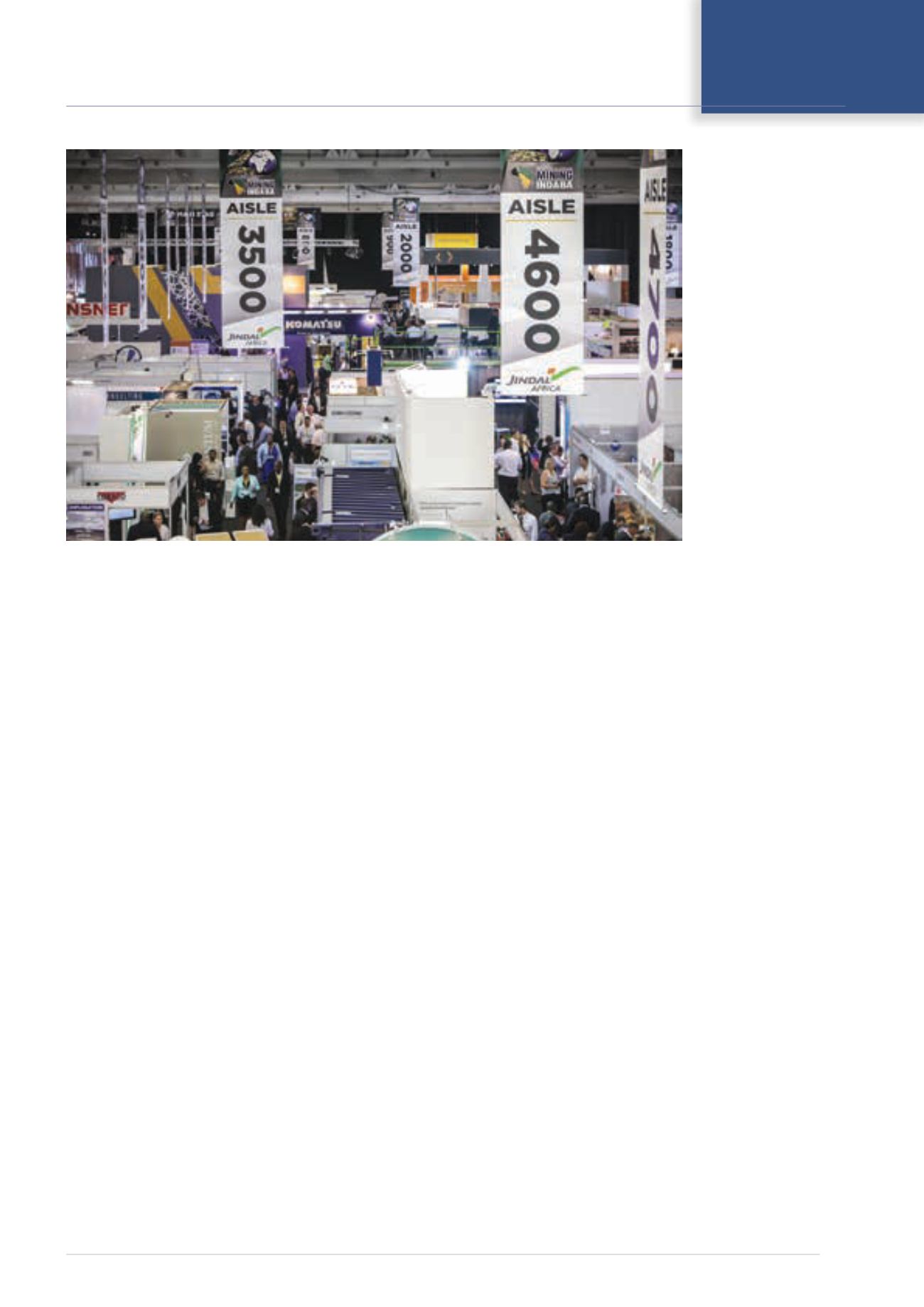
February 2014
MODERN MINING
35
EVENTS
The busy Expo Hall at the
Mining Indaba. There were
approximately 400 exhibi-
tors at the event this year.
these commodities, the Chinese saw it as a tax
imposed on them. In my more than 20 years in
the resources sector, it is the first time I have
heard the term ‘sovereign risk’ used in Asia in
relation to Australia. Fortunately, the newly
elected national government is committed to
repealing the tax.”
Of the mining company presentations
made at the Mining Indaba, two that particu-
larly stood out – for this writer – were those
by
Robert Friedland
, Executive Chairman of
Ivanhoe Mines, and
Mark Bristow
, who heads
Randgold Resources – arguably two of the min-
ing industry’s most dynamic chief executives.
Both have some incredible successes behind
them – the Voisey’s Bay nickel project and the
Oyu Tolgoi copper-gold project in the case of
Friedland and a string of successful gold mines
in Africa, including the prolific (in its heyday)
Morila mine in Mali, in the case of Bristow –
and neither is afraid to speak his mind.
In his address, Friedland – who also partici-
pated in a panel discussion on South Africa’s
mining prospects with
Neal Froneman
of
Sibanye Gold and
Sipho Nkosi
of Exxaro – said
he was “profoundly optimistic” about Africa
and added that “anybody who thinks the
minerals
supercycle
is dead is profoundly mis-
guided.” He argued that the world’s rapid and
relentless urbanisation virtually guaranteed
the supercycle’s continuance and also made
the point that PGMs had a particularly bright
future given the future demand likely from the
car industry – not only for catalytic converters
but also from the burgeoning fuel cell market.
As he did at last year’s Mining Indaba (and
indeed the one before), Friedland focused on
Ivanhoe’s three key projects, the
Platreef
proj-
ect near Mokopane in South Africa (including
the so-called Flatreef, which has an average
24 m thickness and is amenable to large-scale
mechanised underground mining methods)
and its two DRC projects – the
Kamoa
copper
deposit just west of Kolwezi in Katanga and
the historic
Kipushi
zinc-copper mine near
Lubumbashi, also in Katanga. The Platreef and
Kamoa projects are undeniably impressive in
terms of the resources defined and appear even
better when described by Friedland, who is a
magnetic speaker with an ability to make each
of his company’s discoveries seem like the big-
gest in the history of world mining.
Referring to the Platreef, where there have
been as many as 30 exploration rigs on site at
any one time in the past and where an 800 m
deep, US$80 million bulk-sample shaft is
being sunk, he said Ivanhoe would be creating
an ultra-safe, modern mine which would be
“as clean as a hospital”. Kamoa he described
as the first Tier-1 discovery in the Congo
“since Leopold gave up his ghost” (a refer-
ence to the best-selling book ‘King Leopold’s
Ghost’ authored by Adam Hoschchild describ-
ing the early years of colonial exploitation in
the Congo) and said it represented – with a
resource of 24 Mt of copper – “an unparalleled
copper endowment”. As for Kipushi, he told
Indaba delegates that the primary target was an
undeveloped zinc deposit known as ‘The Big
Zinc’ at a depth of around 1 200 m. In typical
fashion, he talked up the prospects for zinc,
pointing to its use as an additive in fertilisers
“... anybody who
thinks the minerals
supercycle is dead
is profoundly
misguided.”
Robert Friedland,
Executive Chairman,
Ivanhoe Mines


